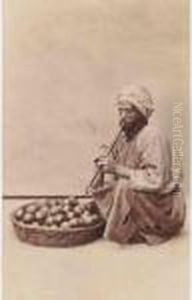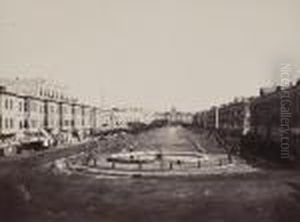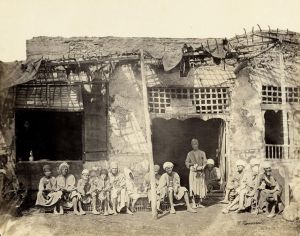Wilhelm Hammerschmidt Paintings
Wilhelm Hammerschmidt was a German photographer known for his pioneering work in the Middle East, particularly in Egypt, during the mid-19th century. Born in 1825, Hammerschmidt's life coincided with a period of significant technological advancements and a burgeoning interest in Orientalism in Europe. His work is characterized by the meticulous documentation of landscapes, architecture, and people, offering a rare and invaluable glimpse into the cultural and historical aspects of the region during that era.
Hammerschmidt moved to Cairo in the early 1850s, where he established a photography studio. This was a time when photography was still in its infancy, and Hammerschmidt was among the first to explore the medium's potential for documentary and artistic expression outside Europe. His photographs covered a wide range of subjects, from the monumental ruins of ancient Egypt to the bustling life in Cairo's streets and markets. He was particularly adept at capturing the architectural details of mosques, temples, and other historic buildings, contributing significantly to the documentation of Egypt's rich architectural heritage.
Beyond his work in Egypt, Hammerschmidt traveled across the region, taking photographs in places like Palestine, Syria, and possibly other parts of the Ottoman Empire. His travels and the photographs he produced during these journeys played a crucial role in shaping Western perceptions of the Middle East. Through exhibitions and the sale of his photographs in Europe, he contributed to the Orientalist vision that fascinated European audiences, providing a visual counterpart to the literary and artistic works that depicted the East as a place of mystery and exoticism.
Despite the importance of his work, Wilhelm Hammerschmidt's life and career remain somewhat obscure, and details about his personal life are scant. What is clear, however, is the impact of his photography on both the art form and the Western view of the Middle East. Hammerschmidt died in 1869, but his legacy lives on through his photographs, which continue to be appreciated for their artistic quality and historical value. They serve not only as a testament to his skill and vision but also as a valuable resource for understanding the social and cultural landscape of the Middle East in the 19th century.


